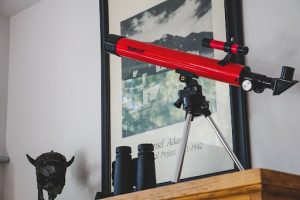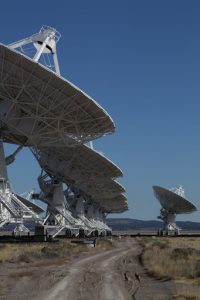
There is so much you can learn about space and where we are in the universe without ever having to leave Earth. With the help of telescopes, people have gotten a much closer look at all those little dots in the sky. It turns out that they are not little holes in a big blanket covering Earth, but actually stars, planets, and galaxies.
Telescopes come in all sizes, from small and personal to absolutely gigantic. Different telescopes can detect visible light, radio, and even x-rays. There is a telescope for every job and there is a lot of work to do so let’s get going!
Optical Telescopes
The most common type of telescopes are optical telescopes. This means that they collect visible light to create a large, detailed image. There are two types of optical telescopes: refracting and reflecting. The less common of the two, refracting telescopes, use a lens to focus the light that passes through it in a very similar way to glasses you wear. So in a way, you have two low power telescopes right on your face! The more common optical telescopes use mirrors to bounce and focus light. While refracting telescopes tend to be small due to how much heavier lenses are to mirrors, reflecting telescopes can be small or very, very big.

Telescopes are measured by how large the collection surface is. The largest optical reflecting telescope in the world is the Gran Telescopio Canarias in the Canary Islands with a colossal area of 10.4-meters or 34 feet. There’s no way you could fit that in your living room! That is not to say that you couldn’t find yourself a decent telescope and make your own discoveries with an optical telescope.
Here is a guide to help get your stargazing started.
Radio Telescopes
If you thought optical telescopes were big, then you aren’t ready for radio telescopes! Radio telescopes work similarly to optical telescopes. They collect and focus radio waves that can then be studied to tell us information we could never see with our eyes.
The difference between these telescopes and optical telescopes is mostly size and materials. Radio waves are much longer than light waves which means that in order to catch them, you’re going to need a bigger net! Mirrors and lenses are not used on radio telescopes because radio waves do not need a smooth, reflective surface to be captured the same way light is captured.
The largest single radio telescope in the world, the Arecibo Observatory, is located in Puerto Rico and has a diameter over 300 meters. This telescope is actually built right into the ground and only moves with the rotation of the Earth.

Other Types of Telescopes
While the size of a telescope plays a key role in their ability to collect information, size is not everything. Sometimes it matters much more where your telescope is rather than how big it is. The Hubble Space Telescope floats over 360 miles over the Earth! This telescope is special in that it can collect visible, infrared, and ultraviolet light.
There are many advantages to being located above the atmosphere. Most obviously, telescopes in space do not have to wait until night time to collect data and are not affected by bad weather. Infrared and ultraviolet light are blocked by the atmosphere and thus can only be collected in space. Also, the atmosphere distorts visible light as well so a clearer picture can be made from space.
Telescopes are an astronomers best friend. An essential tool of the trade, every aspiring astronomer needs their own telescope. Every telescope is different so take some time to get to know yours and who knows, you might just make a discovery that changes the way we look at the night sky.
Telescopes That Have Mapped the Stars!
Written by Alexander Jones
October 16th, 2021
